Here are the five biggest iPad Pro problems, because no device is perfect
The 2018 iPad Pro is undoubtedly the best iPad ever made. It's chock full of cutting edge features like desktop-grade performance, a completely revamped design, a modernized display, Face ID biometric authentication and support for the brand new Apple Pencil, but no device is perfect.
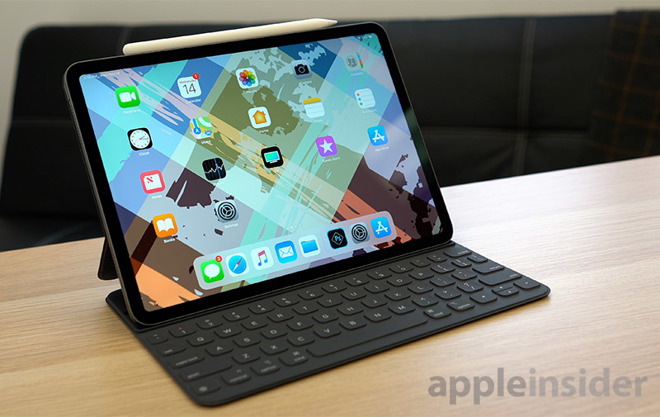
The 2018 iPad Pro and Apple Pencil.
Despite its many benefits, there are a few major issues with Apple's latest tablet, and we have selected five problems to highlight in hopes that the information can help potential buyers or upgraders make a final decision.
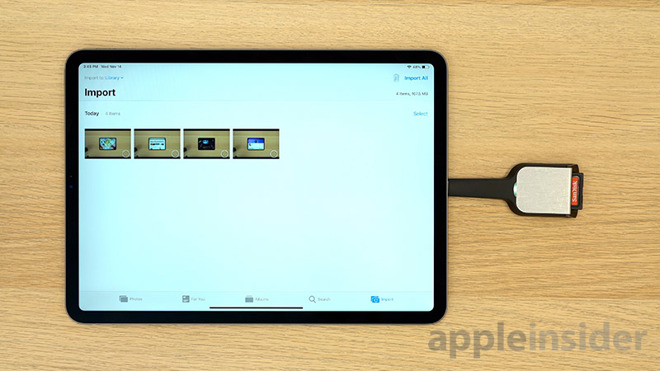
Apple built in only limited support for external hard drives for iPad Pro's USB-C port.
If you're a professional using a notebook, chances are you're going to be moving files back and forth onto a flash drive or other external storage. While it can connect to such hardware, the iPad Pro can only detect photos and video from these peripherals.
To make the situation worse, you have to import image files into the camera roll, which in some cases can trigger an automatic synchronization with iCloud. While there is Apple's file manager app on the iPad, it is extremely limited with users unable to simply drag and drop files with the same level of ease as they would on an notebook.
For videographers who archive tons of video footage and projects to hard drives for safe keeping, you just can't do that on the iPad Pro.
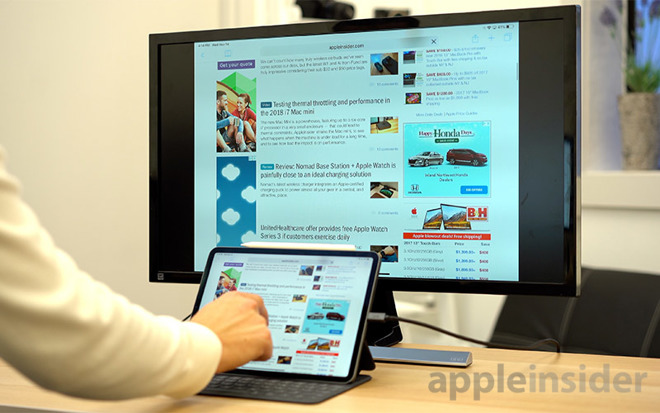
iPad Pro can mirror its display to an external monitor, but a lack of input peripherals hurts the experience.
On the iPad Pro, there's no mouse support. Even though you can connect to an external display, you still have to hold the iPad in your hands and look down to control it.
Apart from that, having a trackpad or mouse is another fundamental requirement to making a computer a computer, as it's much quicker and easier to navigate and move files around. There are so many things on a computer that are tough to accomplish with touch controls alone.
iPad Pro does offer limited cursor control through a two-finger gesture on the soft keyboard, but its implementation is a far cry from a dedicated touchpad.
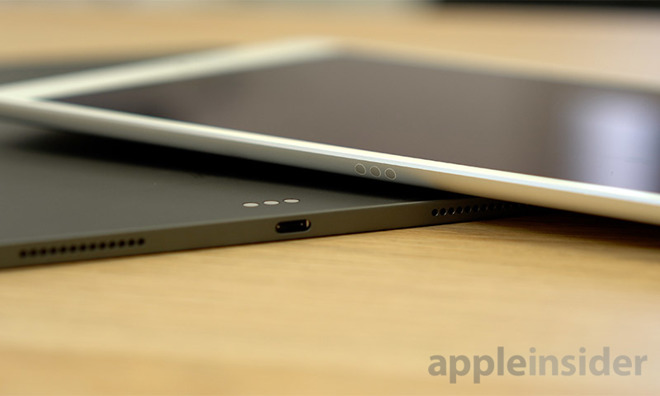
2018 brings a relocated Smart Connector and headphone jack deletion.
I personally have moved on to Apple's AirPods for my audio needs, which is one of my favorite Apple devices, but there are still a lot of professionals who rely on wired headphones and audio equipment to do their work.
Sure, removing the headphone jack does help make the iPad Pro even thinner, but how think does it really need to be?
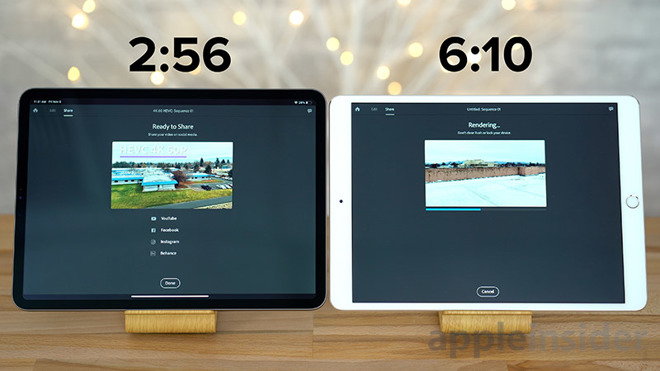
iPad Pro performance compared.
Almost every single app already felt incredibly smooth on the 10.5-inch model, so it's gonna be hard to feel that extra speed in day to day use.
Yes, you may notice a difference with demanding software such as Adobe's Photoshop for iPad, arriving next year, but there aren't that many apps like Photoshop in the iOS App Store at the moment.
As said earlier, the limited Files app and other restrictions are holding the iPad Pro back from its full potential. With A12X Bionic now in service, we hope developers start to tap into the chip's raw power to deliver more powerful apps for iPad.
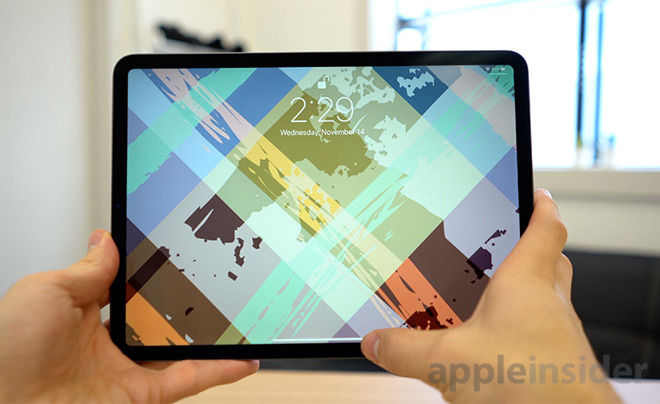
iPad Pro in landscape orientation.
The 2018 iPad Pro now starts at $799 for the 11-inch model, that's $150 more than before, and it still comes with only 64GB of storage. If you're a professional that's drawn to the high level of performance that the iPad Pro offers, 64GB likely won't be enough storage for you, especially if you have to import photos and videos directly to disk instead of working off of an external drive.
Upgrading to 256GB will cost you an extra $150, and 512GB costs $350 more. If you're looking for 1TB of storage, be ready to pay almost double the price of a 64GB model. Add to that a $130 Apple Pencil, which is required since the 2018 iPad Pro is not compatible with first-generation Pencils, and you're looking at an eye-watering out-the-door price.
Apple said that the 2018 iPad Pro is faster than 92 percent of all portable PCs, and while that may be true, the base model only comes with 4GB of RAM. A lot of professional apps can benefit from a decent amount of RAM, especially when multitasking.
Yes, the iPad Pro technically outperforms last years' specced-out 15-inch MacBook Pro in Geekbench 4 testing, but even the base 15-inch model came with 16GB of RAM.
You can go from 4GB to 6GB of RAM on the new iPad Pro, which is nice, but to do so involves upgrading to the 1TB-capacity model for an extra $750.
Don't take this all the wrong way, as the new iPad Pro is certainly the best iPad and tablet ever. It revolutionizes the form factor, so much so that if you're planning on upgrading to a new iPad Pro within the next couple of years, it could be worth upgrading straight away. The sticking points listed here are meant to inform buyers so they're not blindsided when they take their shiny new device home, only to find something isn't quite right about their new purchase.
Units on backorder are filled on a first come, first served basis, so you'll want to reserve your spot in line today for the fastest availability. Adorama will not charge your credit card until your order is ready to ship.
Those looking for an iPad Pro right away can also shop in-stock models at B&H Photo and Abt.com with no sales tax collected on orders shipped to most states*.
For deals across all iPad lines, be sure to check out our iPad Price Guide.

The 2018 iPad Pro and Apple Pencil.
Despite its many benefits, there are a few major issues with Apple's latest tablet, and we have selected five problems to highlight in hopes that the information can help potential buyers or upgraders make a final decision.
External Drive Connectivity
The first problem is less of a hardware shortcoming than one of software annoyance. Apple implies that the iPad Pro can replace a notebook, but it's missing one key feature that serves as the backbone of any full-fledged computer, and that's full hard drive support.
Apple built in only limited support for external hard drives for iPad Pro's USB-C port.
If you're a professional using a notebook, chances are you're going to be moving files back and forth onto a flash drive or other external storage. While it can connect to such hardware, the iPad Pro can only detect photos and video from these peripherals.
To make the situation worse, you have to import image files into the camera roll, which in some cases can trigger an automatic synchronization with iCloud. While there is Apple's file manager app on the iPad, it is extremely limited with users unable to simply drag and drop files with the same level of ease as they would on an notebook.
For videographers who archive tons of video footage and projects to hard drives for safe keeping, you just can't do that on the iPad Pro.
Lack of Mouse Support
Apple touts iPad Pro's ability to connect to an external display, just like a MacBook, providing users with a larger working area. MacBooks also get clamshell mode, which basically allows you to put the MacBook aside and work with a mouse, keyboard and a bigger screen.
iPad Pro can mirror its display to an external monitor, but a lack of input peripherals hurts the experience.
On the iPad Pro, there's no mouse support. Even though you can connect to an external display, you still have to hold the iPad in your hands and look down to control it.
Apart from that, having a trackpad or mouse is another fundamental requirement to making a computer a computer, as it's much quicker and easier to navigate and move files around. There are so many things on a computer that are tough to accomplish with touch controls alone.
iPad Pro does offer limited cursor control through a two-finger gesture on the soft keyboard, but its implementation is a far cry from a dedicated touchpad.
Goodbye Headphone Jack
The third problem is that the 2018 iPad Pro is the first iPad ever to ditch the headphone jack, and to be honest, I thought that Apple would keep it around for at least a couple more years.
2018 brings a relocated Smart Connector and headphone jack deletion.
I personally have moved on to Apple's AirPods for my audio needs, which is one of my favorite Apple devices, but there are still a lot of professionals who rely on wired headphones and audio equipment to do their work.
Sure, removing the headphone jack does help make the iPad Pro even thinner, but how think does it really need to be?
Overpowered for Daily Use
The iPad Pro packs in an astounding amount of processing power, doubling the benchmark scores of the 10.5-inch iPad Pro in multiple tests, and even exporting a 4K HEVC video in less than half the time. Here's the issue: that power is going to waste.
iPad Pro performance compared.
Almost every single app already felt incredibly smooth on the 10.5-inch model, so it's gonna be hard to feel that extra speed in day to day use.
Yes, you may notice a difference with demanding software such as Adobe's Photoshop for iPad, arriving next year, but there aren't that many apps like Photoshop in the iOS App Store at the moment.
As said earlier, the limited Files app and other restrictions are holding the iPad Pro back from its full potential. With A12X Bionic now in service, we hope developers start to tap into the chip's raw power to deliver more powerful apps for iPad.
Storage and flash memory cost
The fifth and final issue is the limited amount of storage and RAM you get with iPad Pro's base configuration, which is still priced at a hefty premium over competing hardware.
iPad Pro in landscape orientation.
The 2018 iPad Pro now starts at $799 for the 11-inch model, that's $150 more than before, and it still comes with only 64GB of storage. If you're a professional that's drawn to the high level of performance that the iPad Pro offers, 64GB likely won't be enough storage for you, especially if you have to import photos and videos directly to disk instead of working off of an external drive.
Upgrading to 256GB will cost you an extra $150, and 512GB costs $350 more. If you're looking for 1TB of storage, be ready to pay almost double the price of a 64GB model. Add to that a $130 Apple Pencil, which is required since the 2018 iPad Pro is not compatible with first-generation Pencils, and you're looking at an eye-watering out-the-door price.
Apple said that the 2018 iPad Pro is faster than 92 percent of all portable PCs, and while that may be true, the base model only comes with 4GB of RAM. A lot of professional apps can benefit from a decent amount of RAM, especially when multitasking.
Yes, the iPad Pro technically outperforms last years' specced-out 15-inch MacBook Pro in Geekbench 4 testing, but even the base 15-inch model came with 16GB of RAM.
You can go from 4GB to 6GB of RAM on the new iPad Pro, which is nice, but to do so involves upgrading to the 1TB-capacity model for an extra $750.
Don't take this all the wrong way, as the new iPad Pro is certainly the best iPad and tablet ever. It revolutionizes the form factor, so much so that if you're planning on upgrading to a new iPad Pro within the next couple of years, it could be worth upgrading straight away. The sticking points listed here are meant to inform buyers so they're not blindsided when they take their shiny new device home, only to find something isn't quite right about their new purchase.
Where to buy
Apple authorized resellers offer a variety of perks on iPad Pro purchases, including no sales tax on orders shipped outside New York and New Jersey at Adorama, plus free shipping within the contiguous U.S. Shoppers can also take advantage of financing incentives with the Adorama Credit Card, such as no interest when paid in full within six months on iPad Pro orders over $500 -- or no interest when paid in full within 12 months on iPad Pros over $1,000. With the holidays fast approaching, having a little extra time to pay off the purchase can be beneficial.Units on backorder are filled on a first come, first served basis, so you'll want to reserve your spot in line today for the fastest availability. Adorama will not charge your credit card until your order is ready to ship.
Those looking for an iPad Pro right away can also shop in-stock models at B&H Photo and Abt.com with no sales tax collected on orders shipped to most states*.
For deals across all iPad lines, be sure to check out our iPad Price Guide.


Comments
To me this is classic problem people have shifting their computing perspective to see the iPad as a real computer replacement. It’s sort of like switching between automobiles—you don’t say the Hyundai Elantra is not a ‘full’ car because you can’t accelerate to pass other cars as quickly as a McLaren P1. Instead you adapt your driving style to compensate for the differences, which inherently means accepting and adapting to limitations. Undoubtedly if everyone grew up driving a McLaren P1 people would resist the Hyundai Elantra as a ‘real’ car, saying you can’t do this or that with it.
I’m not meaning to say you can do everything on an iPad, but you also can’t do everything on a ‘full’ computer. But that doesn’t make either less of a real computing device. I can’t write this post on my computer because I’d never casually take my MacBook Pro as I’m out and about. If everyone grew up with iPads and didn’t know anything about desktop/laptop computers, we’d undoubtedly think they were too cumbersome and overly complex to accomplish most tasks.
While you are quite correct that we may not miss the laptop form factor if we had never seen it, for many tasks, it is superior to performing them on even the most capable tablet. And I for one am not willing to go backwards.
i honestly can’t recommend the iPad Pro. Very regretfully. The basic iPad with the old pencil, with its stupid charging solution, is the iPad I have had my workplace switch to from iPad pros. The constant war I have with the Apple Hating IT department to have iPads at all, means I really don’t need the extra lead in the saddle bag of the iPad Pro price. Actually, rather than lead in the saddle bag, maybe it’s plutonium in the saddle bag. Apple product prices is always the first weapon IT use against my use case.
Then IT moves to file management arguments (I have no answer here), and connectivity to local printers and presentation hardware. The day Surface comes with built in GPS it’s game over.
Yes, the files app needs more advanced control around file localisation (and renaming, bulk copying & moving) but to run back to plugging in HDDs or Flash drives isn’t moving ahead in information management.
Yes, running all photo imports via Photos is nonsense & double-handling and inefficient. They shouldn’t just add another “drive” for people to complain about and not move forward but an API to allow access from other Apps for Cloud service ingestion? And get rid of the location: “on my iPad/iPhone”.
Adding RAM serves a purpose. If that purpose is already met, don’t add RAM.
If I hear another “where’s the mouse” article, I’m going to scream, iOS should never have a mouse. I really don’t get the external screen, I just don’t.
The industry is packed with clueless attempts at Touch with MS dipping their toe in an Samsung running back to a desktop config with DeX. I really hope Apple doesn’t become one of them but they’d better come up with some big .1 iOS ‘fixes’
When adding external monitor mirroring, the whole thing falls apart completely as the customer then not only has to take their hands off the keyboard, but also their eyes off the monitor, and basically return to the iPad for navigation. So Apple has all but created a Mac replacement, except for the ability to navigate the screen without taking ones hands and eyes off the accessories which use with the iPad is being marketed and sold. It just makes no sense, and is fairly hypocritical vis-a-vis Apple’s position on touchscreen Macs.
Sometimes you have to step sideways to move forwards.
having a trackpad or mouse is another fundamental requirement to making a computer a computer,
...yyyyeah. That’s not a requirement for a computer, at all. Do we really need to enumerate the huge list of computers sans mouse? Ironically, it was mainframe computer techno-priests who decried PCs as not being real computers, and then PC techno-priests decrying mouse+GUI machines as not being real computers.
Congrats - you’re the new techno-priest decrying the new thing is not like the old thing.
That forum editor is there for a reason
Actually, you can use external drives with iPads (even older iPads). Instead of connecting your drives by USB-C cable, you can connecting them wirelessly! I have a 1TB Seagate drive that has a battery and Wi_Fi built into it. I've been using it for years with my iPads and iPhones. And there are relatively inexpensive flash drives that you can buy, that also have an internal battery and Wi-Fi.
The cool thing about using external drives wirelessly is that the drive can stay in your pocket, or on a table across the room, while you access files on it with your iPad.
But, you don't need to buy a new wireless hard drive or flash drive if you already have external portable drives. You can buy a Kwilt (or another similar portable wireless server) and connect your drives to it. Then you can access the files on those drives either locally, or remotely access files on drives connected to your Kwilt and at home while you are away.